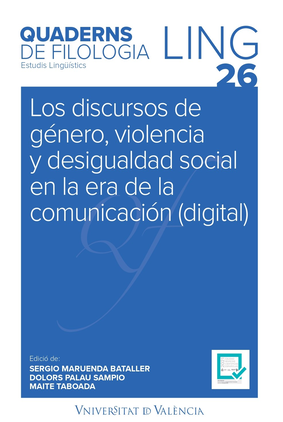Violence and victims: Measuring the impact of professional guidelines on representations of male schizophrenia in UK national newspapers (2013-2016)
DOI:
https://doi.org/10.7203/qf.0.21985Keywords:
news values, media guidelines, mental health, schizophrenia, British print journalism, discursive news values analysis. Abstract
Abstract
UK newspapers are steered towards responsible reporting by guidelines produced by organisations such as the National Union of Journalists (NUJ). Regarding mental health, these guidelines advise, amongst others, avoiding links between mental health and violence, and using stigmatising portrayals. However, adherence to these recommendations is not always consistently achieved. This study adopts a Discursive News Values Analysis (DNVA) framework (Bednarek & Caple, 2017) to examine visual and textual representations of males with schizophrenia in the UK press in light of the NUJ’s mental health guidelines. Specifically, we analyse the news values drawn upon in the text and images contained in all articles about males with schizophrenia published in The Daily Mail, The Guardian, The Independent and The Metro the year prior to and the two years following the publication of the current edition of the NUJ’s guidelines (2014). Our results show the prevalence of four news values: Consonance, Negativity, Personalisation and Positivity. These values suggest correspondence between maintaining negative stereotypes associated with schizophrenia (Consonance/Negativity) and exploring in a more positive manner the experiences of males with this condition (Personalisation/Positivity). Prior to the guidelines’ publication, textual instances of Positivity and Personalisation are more frequent than those of Consonance and Negativity across all four newspapers. However, and unexpectedly, the reverse is true following the guidelines’ publication. As for visual representations, Negativity and Personalisation feature more frequently pre-publication while, post-publication, Consonance features as frequently as Negativity. Our study concludes that uptake of the NUJ’s guidelines has been low and proposes that, to achieve more sensitive portrayals of mental health, greater use of positive, contextual details of individuals with lived experience of schizophrenia are required.
 Downloads
Downloads
Downloads
Published
How to Cite
-
Abstract1304
-
PDF (Español)816
Issue
Section
License
 Este obra está bajo una licencia de Creative Commons Reconocimiento-NoComercial-SinObraDerivada 4.0 Internacional.
Este obra está bajo una licencia de Creative Commons Reconocimiento-NoComercial-SinObraDerivada 4.0 Internacional.
Authors who publish with this journal agree to the following terms:
- Authors retain copyright and grant the journal right of first publication with the work simultaneously licensed under a Creative Commons Attribution License that allows others to share the work with an acknowledgement of the work's authorship and initial publication in this journal.
- Authors are able to enter into separate, additional contractual arrangements for the non-exclusive distribution of the journal's published version of the work (e.g., post it to an institutional repository or publish it in a book), with an acknowledgement of its initial publication in this journal.
- Authors are permitted and encouraged to post their work online (e.g., in institutional repositories or on their website) prior to and during the submission process, as it can lead to productive exchanges, as well as earlier and greater citation of published work (See The Effect of Open Access).



